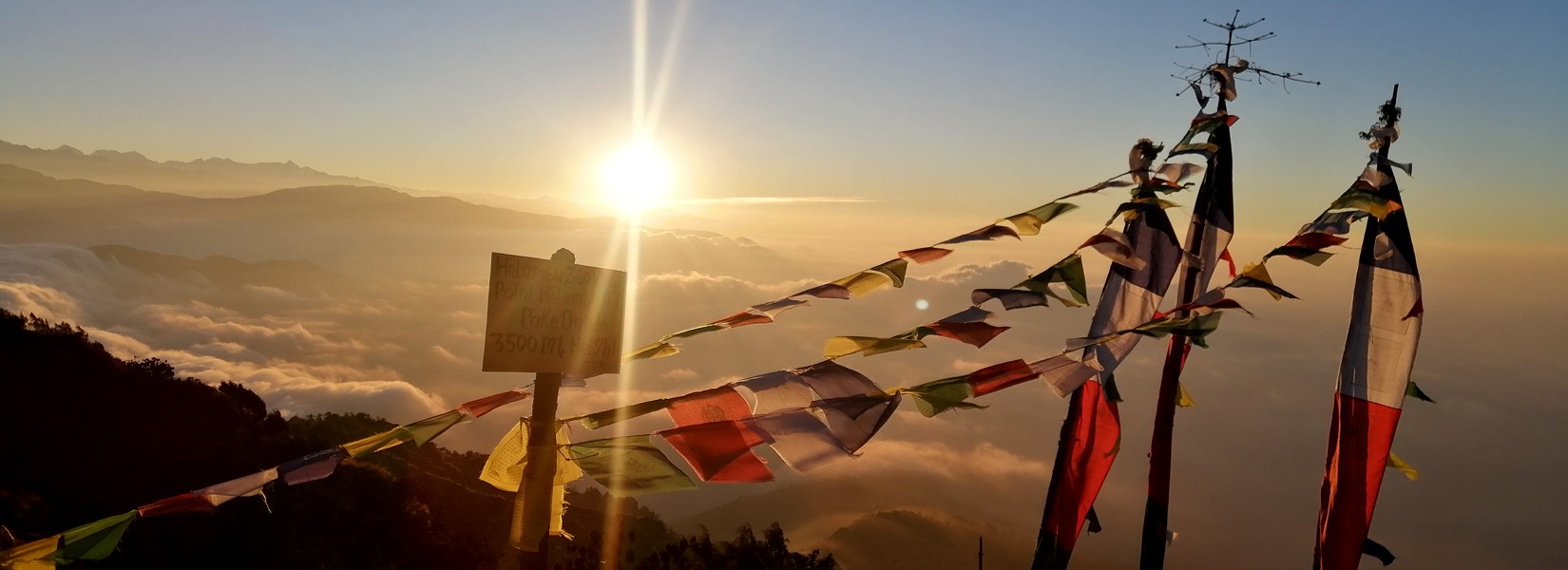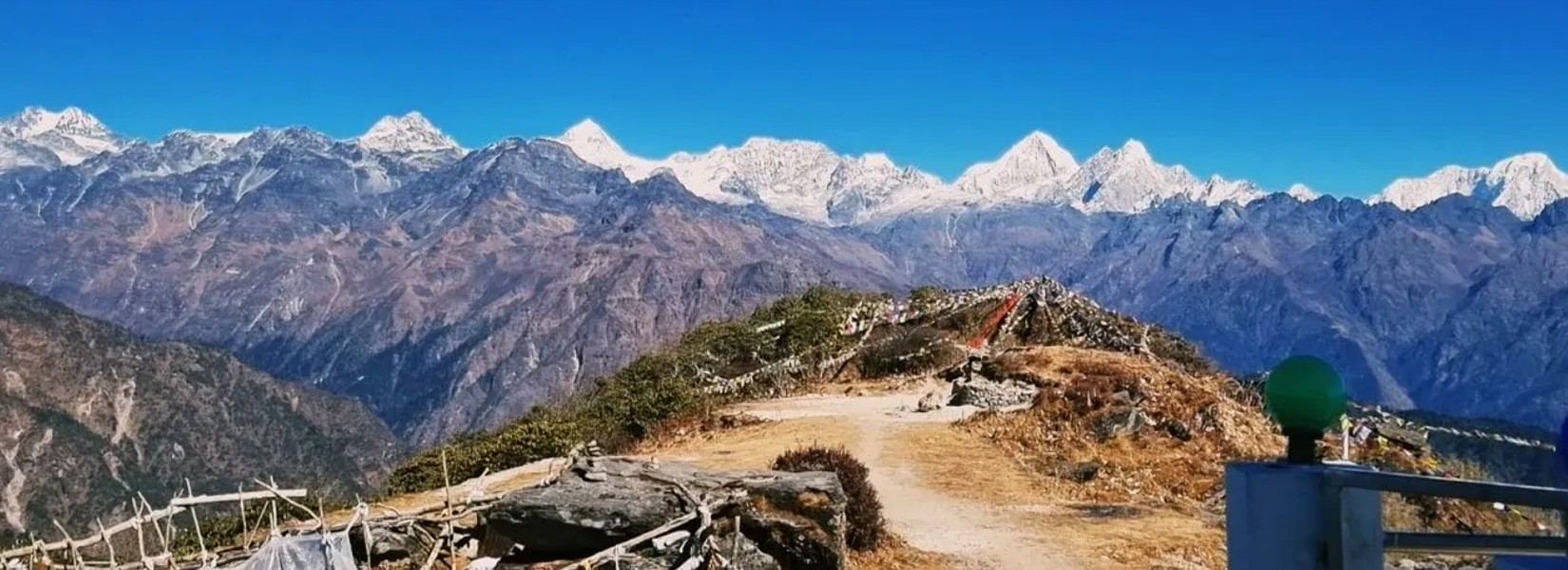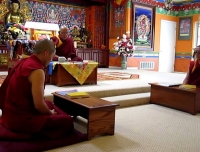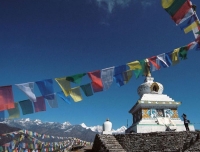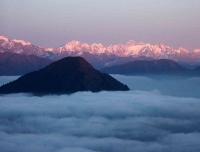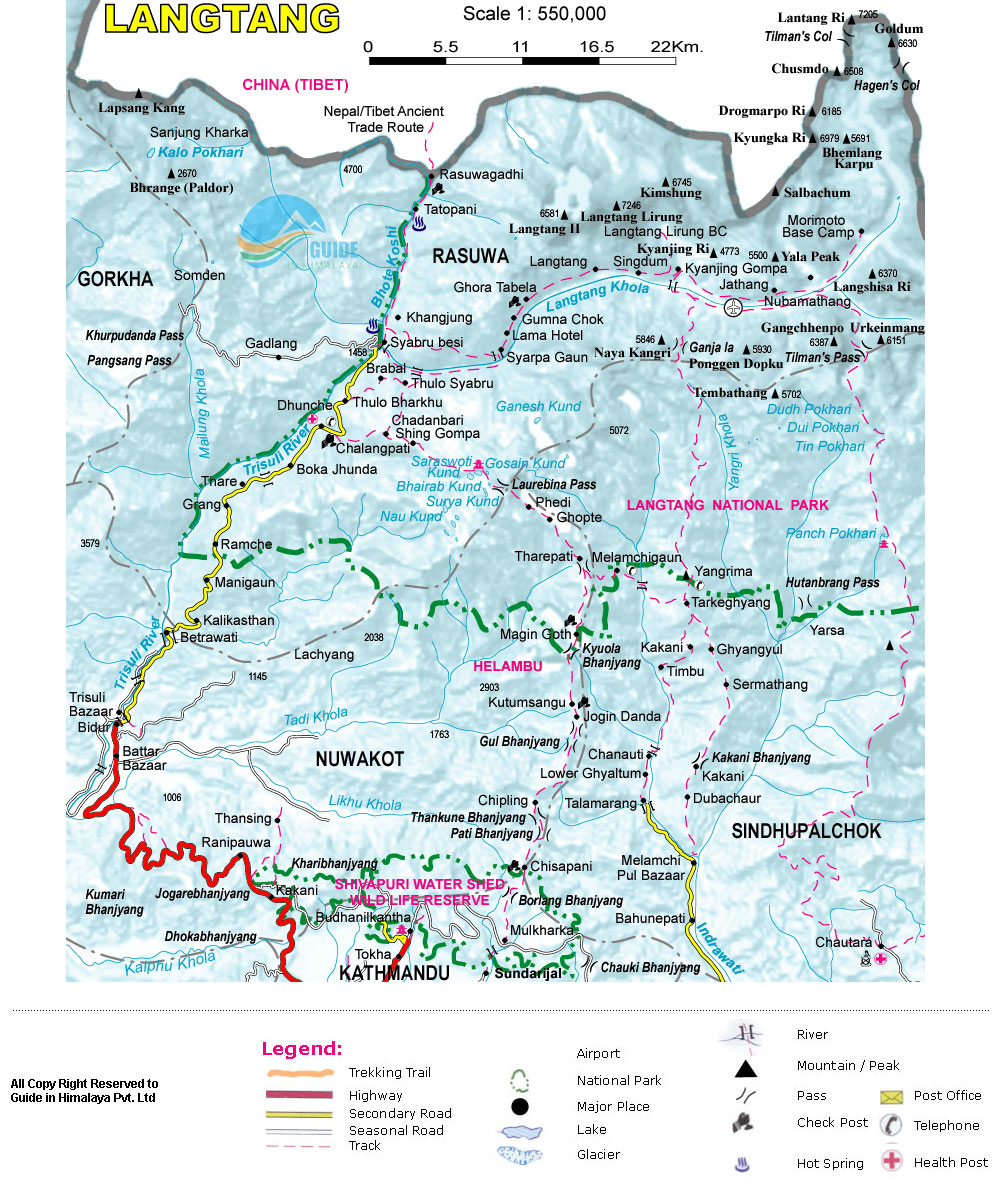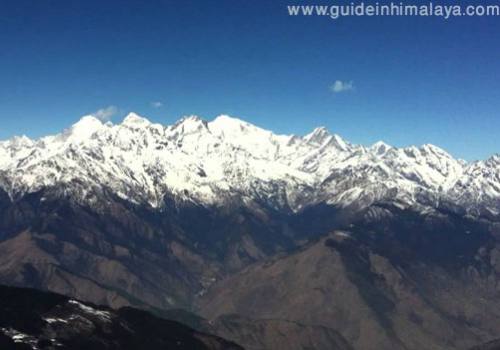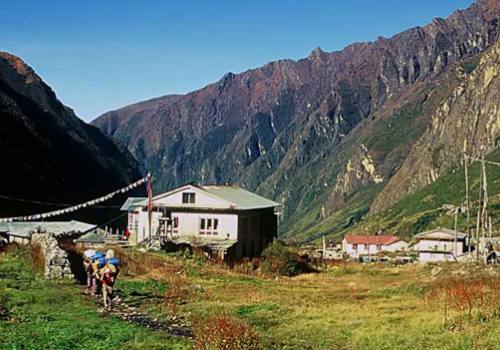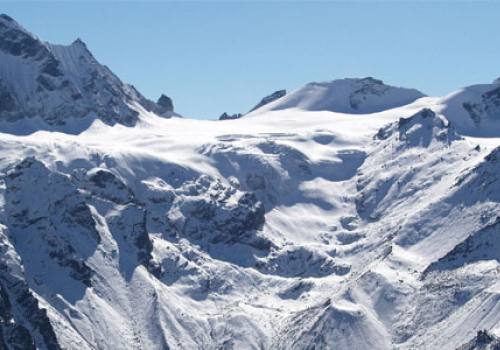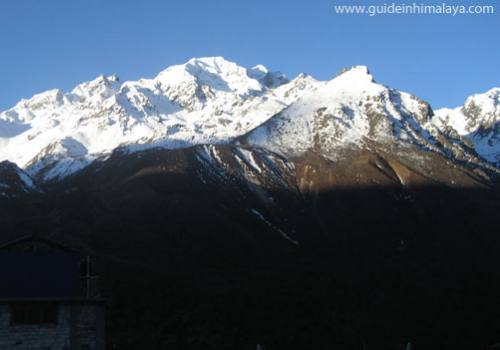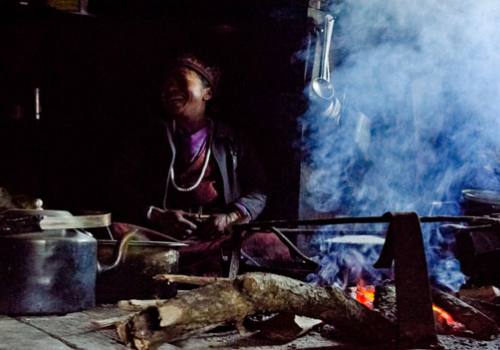Helambu Circuit Trek
Trip Overview
Main Highlights of Helambu Trek: Excellent views of mountains that include the Langtang Range, Dorje Lakpa, Gauri Shankar, Dom Blanc, Ganesh Himal, Manaslu, and even Everest; Yolmo Culture; Interesting Nepal Villages en route; Brahmins, Tamangs, and Sherpas tribes of Nepal; Thanka painting; Buddhist Monasteries; religious monuments; sacred heritage and pilgrimage sites; Guru Rimpoche and Buddhist Saint Milarepa Meditated Caves; beautiful flora and fauna, etc.
Helambu Circuit Trekking also well-known as “Yolmo Heritage” is an easy, naturally and geographically fascinating trekking tour that visitors can experience the mountains of Majestic Himalayan scenery, great opportunity to experience green landscapes, and unique Yolmo culture. This trekking area is close to Kathmandu and easy to access with low elevation. The trek passes through some beautiful rhododendron, pine, and oak forests and interesting Nepal villages en route. During the trip, we visit the homes of the Brahmins, Tamangs, and Sherpas tribes of Nepal. The ranges of mountains that rise above us match the diversity of the people. From low altitudes, we have excellent views of mountains that include the Langtang Range, the Annapurnas, Manaslu, and even Everest on a clear day. It is located something about 70 km north of Kathmandu Valley; it is an area inhabited by Sherpas, Tamangs, and Chetrries. The language, culture, and dress of the Helambhu Sherpas are very different from those who live in the Khumbu area and Rolwaling. The region is a very famous place for Thanka arts.
History of Helambu
According to history, Yolmo people are from different communities of Nepal and Tibet. Yolmo is almost directly north of the Kathmandu Valley, just inside Nepal but bordering on Tibet. In Nepal, the region is called Yolmo (spoken by Buddha, Guru Rinpoche, Marpa, Milarepa, etc.) or Helambu by most Nepalese. The name of Yolmo is widely used by Buddhas and Bodhisattvas from centuries ago and is still in use by great Tibetan Masters and great practitioners. Although most Yolmo persons and others call the name of the region Helambu, it is believed to be the nickname for Yolmo given by mistake or lack of knowledge by some of the unlearned Yolmo persons. They speak a Tibetan-derived language called Yolmo (which is totally different than Nepali). The Yolmo language is mostly understood by Tibetans from central Tibet (Lhasa) and some other parts of Tibet. One can find the most Yolmo words in almost every Tibetan dictionary.
Culture and Sacred Heritages in Helambu
The Yolmo peoples have close cultural and linguistic affinity with the inhabitants of the Kyerong and Rongsyar areas of Tibet. Trade, tourism, Thanka painting, carpet weaving, and farming are common occupations of Yolmo. Long ago, Yolmo people were Yak herding people, and their main source of income was based on herding. The number of Yolmo peoples in Nepal is disputed. The Yolmo Community itself claims their population to be in excess of 150,000. The word ‘Yolmo’ is mentioned in many religious manuscripts of Tibetan Buddhism and is considered a holy region, which in Tibetan or Yolmo is called "Bhe-yul Yolmo" or Hidden Valley. Many great Buddhist masters practiced in Yolmo, including the Tibetan yogi Milarepa, Guru Rinpoche, and Yolmopa Terton Ngagchang Sakya Zangpo. Yolmo is famous for innumerable holy and sacred sites. Among the famous caves there are Tag-phug Sen-ge Jong (The Tiger Cave Lion Fortress) just below the village of Tar-kye Gyang, where Milarepa sang his "Song of a Yogi´s Joys," and Yang-dag Tsoe-ki Drag-phug (Completely Pure Supreme Cave), which is locally known as "Drub-phug" (Cave of Accomplishment) at an altitude of 14,000 feet, where Guru Rinpoche stayed. Nearby there is a small cave called "Khandro Sang-phug" (The Dakini´s Secret Cave) where his consort Shakya Denma (Shakya Devi) stayed. Another cave of Guru Rinpoche is found in Pema-thang (Tibetan: Zema-Thang= Sandy Flats), a small hidden valley within Yolmo. There is another cave of Guru Rinpoche in Yolmo, rediscovered by Jyadral Sangye Dorje Rinpoche in 1984, which is called Yanglashel (not to be confused with a renowned cave of the same name in Pharping, Nepal). Near the village of Milimchhim is yet another cave in which Padmasambhava stayed named "Nyida Rang-zung" (Naturally Appearing Sun and Moon). So on, just below Tarkeghyang Chiri Monastery, said to be the primitive old and historic Buddhist Monastery in all over Yolmo region is the Dzo-dril or Chudi Monastery or Chiri Chuklakhang, found by Yolmo Terton Ngagchhang Shakya Zangpo It is situated just at the basement of Holy Mountain in the north of monastery called Ama Jyomo Yangri.
Language spoken in Helambu Area
The Yolmo language is close to the Tibetan language and consists largely of classical Tibetan terminology as used in religious scripts—'Pechas'. The Yolmowa dialect belongs to the Tibeto-Burman language group and uses the same script as the Tibetan people, which is widely used in their religious books. It is spoken by most central Tibetans, but the difference is only in the way of speaking the words. The people of Yolmo celebrate Sonam Losar at a different time. One month earlier than Tibetans, and customs differ from Tibetan Buddhists. Sonam Losar is all over Nepal and is also celebrated by other ethnic groups of Nepal, like Sherpa people from the Khumbu region of Khunde Khumjung, Thame, Phortse, Thame, Tamang people from Rasuwa, Langtang, Gurung people from Manang, Mustang, etc. Apart from this great new year festival, Yolmo people also celebrate other religious festivals such as Nhara, Tse Chu, Buddha Jayanti, and Manu Bum. In the Yolmo community, traditionally, the men wear Tshuba (alike Tibetan male dress) and ladies wear Tshuba and Burisurku.
Itinerary
1 Day 01:Kathmandu to Sundarijal drive by car or cab then trek to Chisapani
2 Day 02:Trekking Chisapani to Kutumsang (2470m), 6 to 7 hours walk
3 Day 03: Trekking to Tharepati (3690 m) from Kutumsang: 5 to 6 hour walk.
4 Day 04:Trekking to Tarkegyang (2600m) from Tharepani 4 hours
5 Day 05:Excursion to Ama Yangri Peak (3771m)
6 Day 06:Drive to Kathmandu
Cost Includes:
- An experienced licensed English speaking local hiking guide.
- One sharing porter between two trekkers for carrying your stuffs.
- An assistant guide if the group size is above 8 people.
- All meals: 9 Breakfast, 9 Lunches and 9 Dinners during the trek.
- Tea, coffee, cookies and fresh fruits during the trek.
- Local ground transfers to and from trekking.
- Food, accommodation and wages of your guide and porters.
- Lodge accommodation during the trek and group medical kit
- All required group trekking permits for Helambu trek.
- All local taxes and insurance of your trekking crew.
Cost Excludes:
- Airport transfers, meals and accommodation in Kathmandu.
- Guided sightseeing and monuments entrance fees in Kathmandu.
- Hard drinks, beverages such as coke, fanta, mineral water
- Hot shower and hot water, laundry and toiletries.
- Personal travel insurance, internet, phone calls
- Nepal visa fee, international flight ticket, and entrance fees of Bhaktapur (USD15/person).
- Rescue operation charge in case of emergency but arrange on request.
- Gratitude and tips for your guide and porters.
Dates & Prices
We guarantee all private trip departures in any date you select for your convenience
Useful Info
This trip can be personalized as per your requirements that meet your time frame. The trip price will be according to Deluxe, Standard, Budget and group size so please kindly provide us your details for tailor made program.
- Trip Duration 6 Days
- DestinationNepal
- Trip Difficulty Moderate
- Trip StyleTrekking
- AccomodationTeahouse and Lodge
- Transportation: Local Bus, Jeep
- Max Person: 15
- Min Person: 1
- Best Season: Spring and autumn
- Max. Altitude : 3771m
Need Help?
Please feel free to contact us. We will get back to you with 1-2 business days. Or just call us now
+977 9851042153 [email protected]